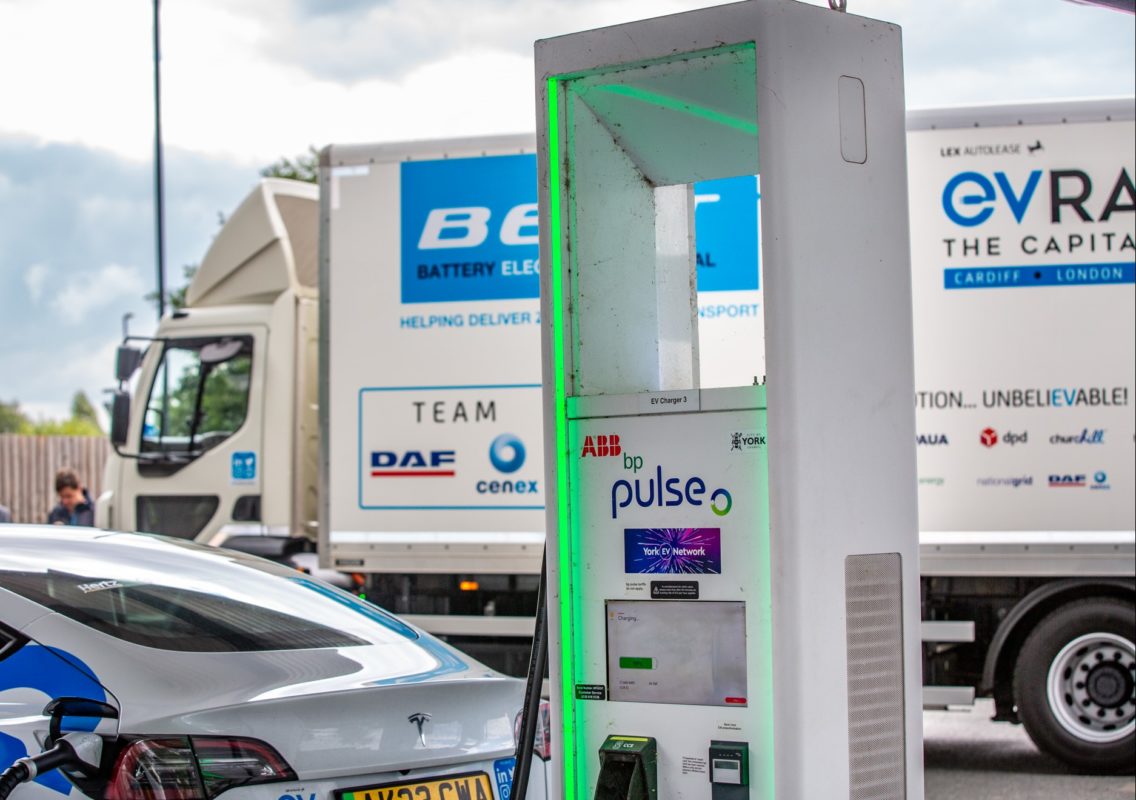
- Categories:
- Blog
- /
- News
- /
- Announcement
Zero Emission Road Freight Demonstration (ZERFD) Programme – Key Considerations
Blog: By Dominic Scholfield, Strategy & Mobility Team Leader, Cenex
Department for Transport announced yesterday that the Zero Emission Road Freight Demonstration programme finally has the green light. At Cenex, we are closely monitoring the program’s progress and eagerly anticipate the forthcoming developments. The announcement itself raises several noteworthy points and prompts important questions for the industry.
Perhaps the most significant observation pertains to the remarkable evolution of zero-emission Heavy Goods Vehicles (HGVs). When this program was initially conceived just over two years ago, it was anticipated that the demonstration would predominantly feature trucks operating on electric roads, such as catenary systems, and hydrogen-fueled trucks. Battery electric trucks were not initially seen as a viable option for long-haul vehicles or vehicles exceeding 26 tons. However, the rapid advancements in battery technology have significantly altered the landscape. As we approach the program’s launch, battery electric heavy trucks are now in the limelight.
This shift also raises a pertinent question: Is this a signal of the diminishing relevance of electric roads? While their absence from this announcement may not come as a complete surprise, recent confidential discussions with government officials indicated the possibility of a separate demonstrator program for catenary systems. Given the fiscal constraints and the postponement of projects like HS2, it is plausible that this technology may be deferred until after the next general election. Considering the swift progress in battery electric options, there is a likelihood that this delay may render electric roads obsolete by the time a decision is reached.
For manufacturers of electric vehicles, the injection of funds is undoubtedly a welcome development. However, lingering concerns persist. Regrettably, this week, electric truck startup Volta filed for bankruptcy, citing the insolvency of their battery supplier, Proterra, as a major factor. Although most of the battery electric trucks in ZERFD are provided by established industry players such as DAF, Renault, Scania, and Volvo, they will likely contemplate diversifying their supply chains in light of this recent setback.
The precise details regarding the suppliers of hydrogen trucks for the two ZERFD projects are not immediately evident from the available information. The consortia involved will undoubtedly experience some apprehension regarding vehicle supply, given the financial difficulties faced by hydrogen truck manufacturers like Nikola and Hyzon earlier this year. While hydrogen technology is in development among the major European truck OEMs, there are no operational models on the road yet, and most prominent players in this field originate from the Far East. Consequently, we may witness new entrants in the UK market.
Lastly, it appears that this program will facilitate the initial deployment of megawatt charging infrastructure at truck stops and motorway services. This represents a potential game-changing development, but it will necessitate a substantial increase in electrical capacity at these locations. As such, it ventures into uncharted territory concerning grid connections and energy management on site.
Cenex has been monitoring and reporting on the activity in the Battery Electric Truck Trial (BETT) for the last 12 months, If you want to learn more about the performance of battery electric trucks, please visit: https://bett.cenex.co.uk/.